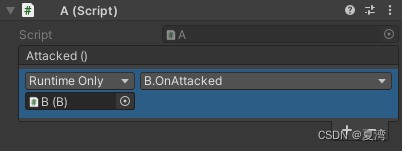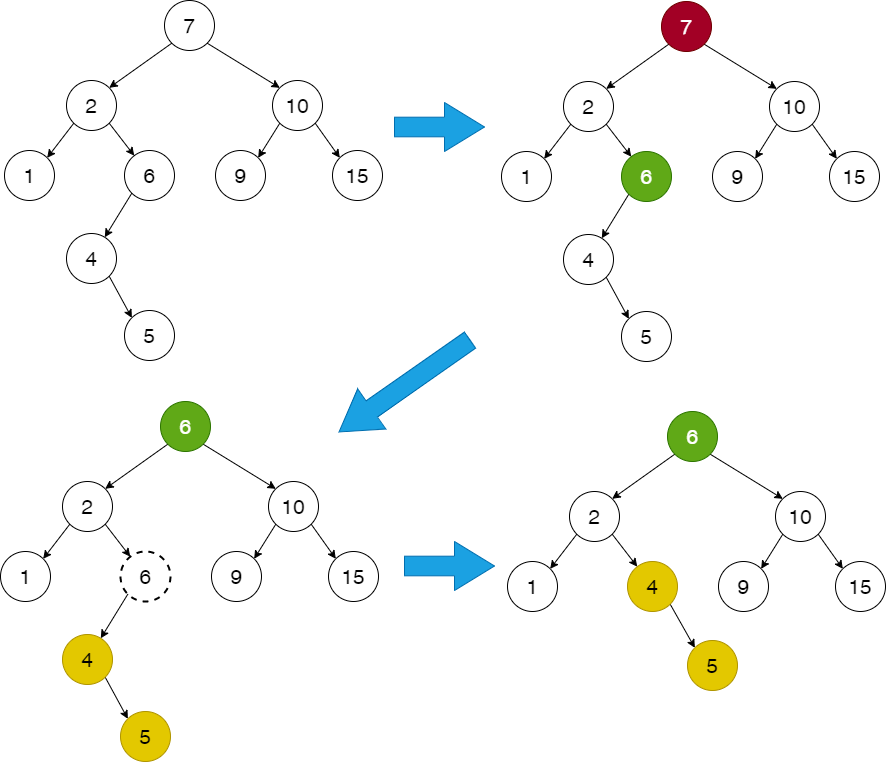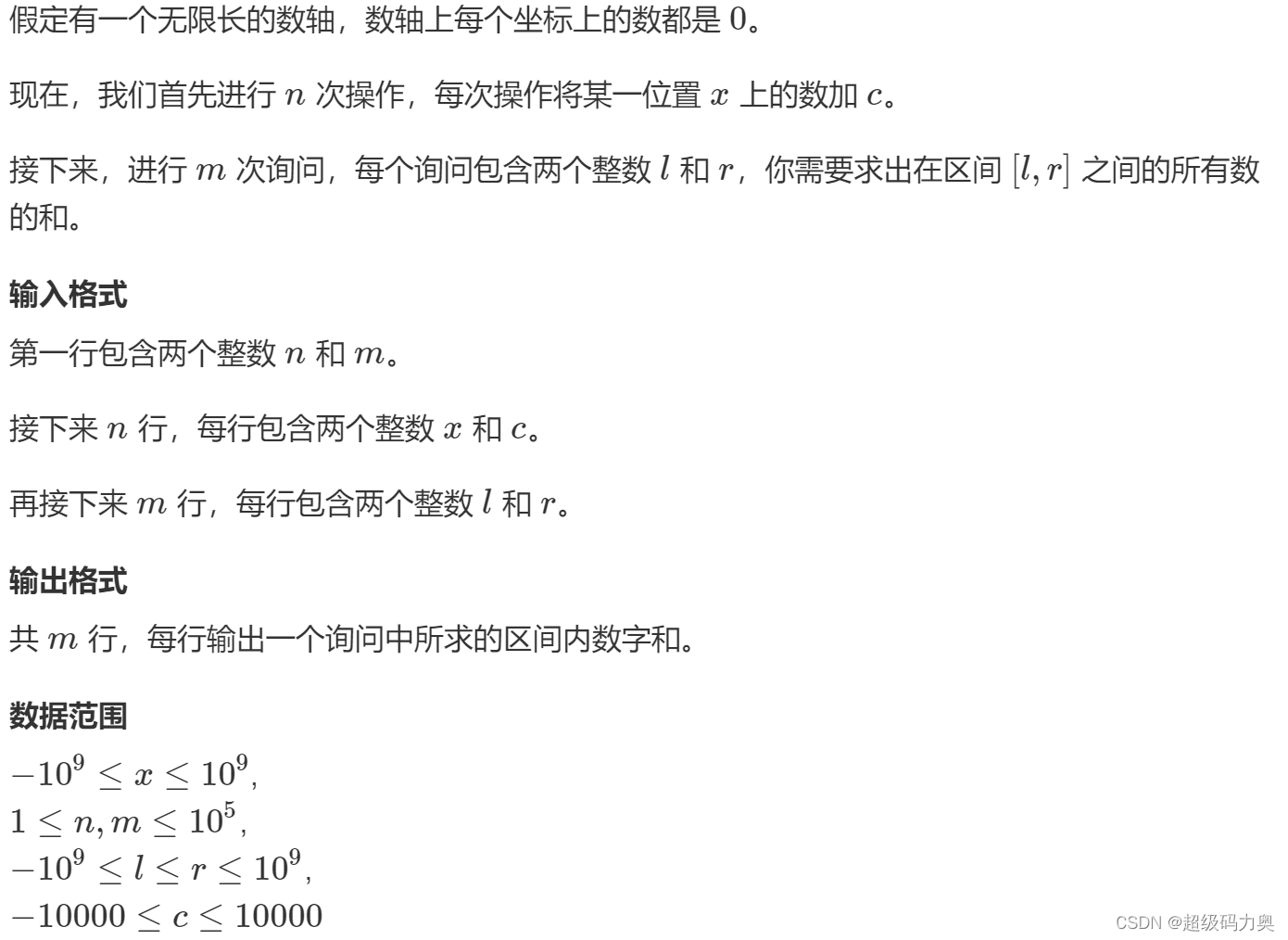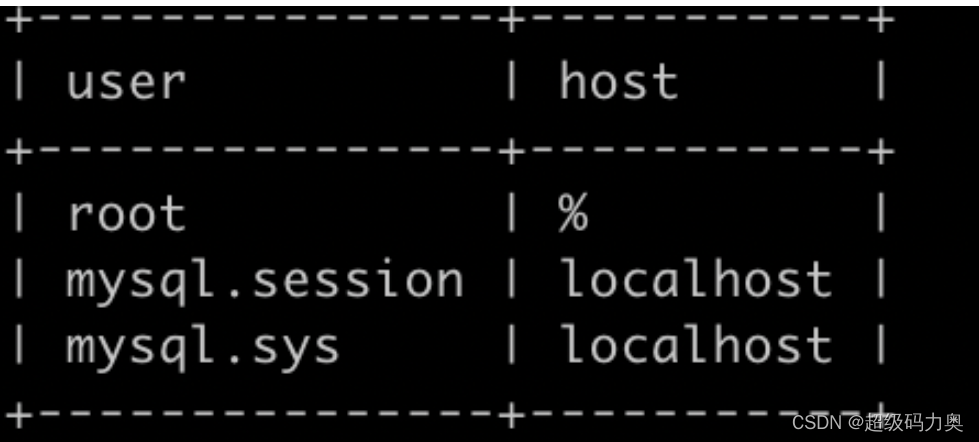当前位置:网站首页>Evaluate multipath BBR congestion control on ns3
Evaluate multipath BBR congestion control on ns3
2022-08-02 14:12:00 【Soonyang Zhang】
The authors in [1,2] propose a couple BBR congestion control algorithm for multipath transmission.
A dumbbell topology is built to evaluate whether the multipath BBR session can behave friendly to single BBR session. You know, one of the goal of multipath congestion conrol is “do not harm”[3]:
Goal 2 (Do no harm) A multipath flow should not take up more capacity from any of the resources shared by its different paths than if it were a single flow using only one of these paths. This guarantees it will not unduly harm other flows.
/** Network topology
*
* 100Mb/s, 20ms 100Mb/s, 20ms
* n0--------------| |---------------n4
* | 5Mbps/s, 10ms |
* n2------------------n3
* 100Mb/s, 20ms | | 100Mb/s, 20ms
* n1--------------| |---------------n5
*
*
*/
n0--L0--n2--L1--n3--L2--n4
n1--L3--n2--L1--n3--L4--n5
Parameters on each link:
typedef struct
{
uint64_t bps;// bandiwidth
uint32_t msDelay;//propagation delay
uint32_t msQdelay; //maxmium buffer length bps*msQdelay
}link_config_t;
Four flows are tested. And flow1 and flow4 are two subflows of a multipath session. flow2 and flow3 take origin BBR for rate control. flow1 and flow2 take route(n0->n4). flow3 and flow4 take route(n1->n5).
Test on two paths with same propagation delay
Link configuration on above dumbbell topology
link_config_t p4pLinks[]={
[0]={100*1000000,20,200},
[1]={5*1000000,10,200},
[2]={100*1000000,20,200},
[3]={100*1000000,20,200},
[4]={100*1000000,20,200},
};
When flow1 and flow4 follow the congestion control rule of couple BBR.
The sending rate of each flow: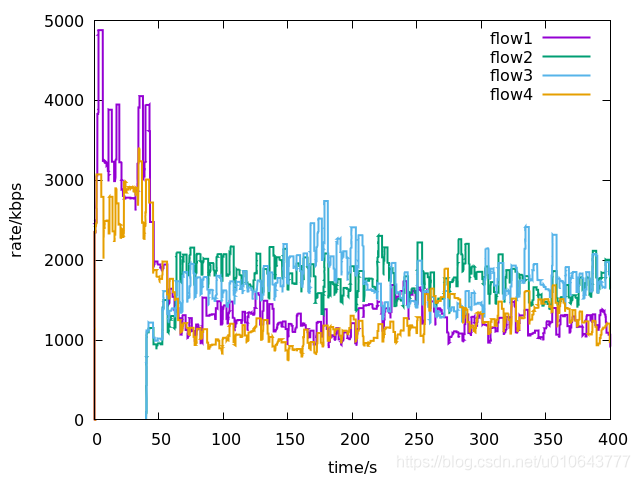
Packets received rate, here mp denotes the total throughput of the multipath session: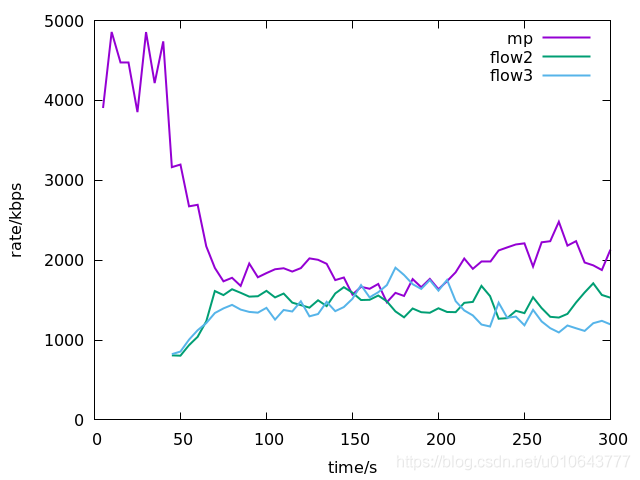
When flow1 and flow4 perform congestion control seperately.
The sending rate of each flow: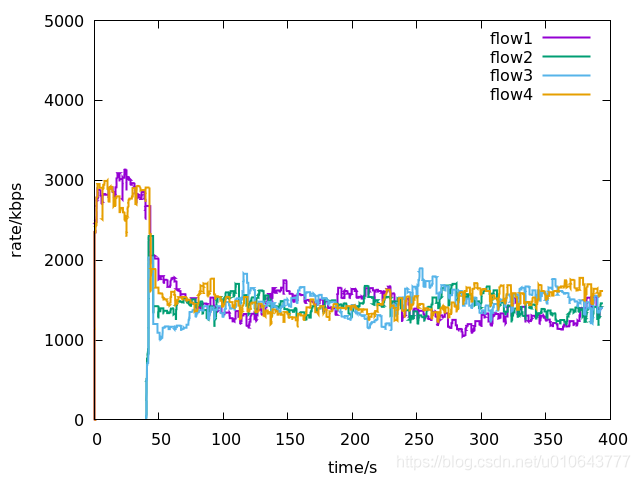
Packets received rate(calculated at every 5 seconds):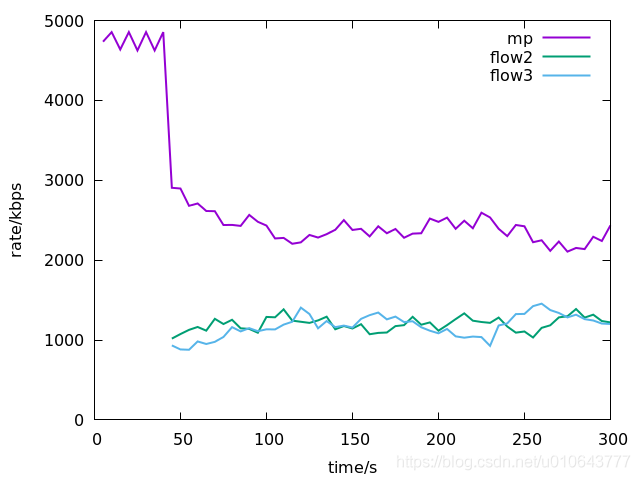
Comments
The couple BBR session indeed behaves friendly to single path BBR.
Test on two paths with different propagation delay
Link configuration on above dumbbell topology
link_config_t p4pLinks4[]={
[0]={100*1000000,10,200},
[1]={8*1000000,10,200},
[2]={100*1000000,10,200},
[3]={100*1000000,20,200},
[4]={100*1000000,20,200},
};
When flow1 and flow4 follow the congestion control rule of couple BBR.
The sending rate of each flow: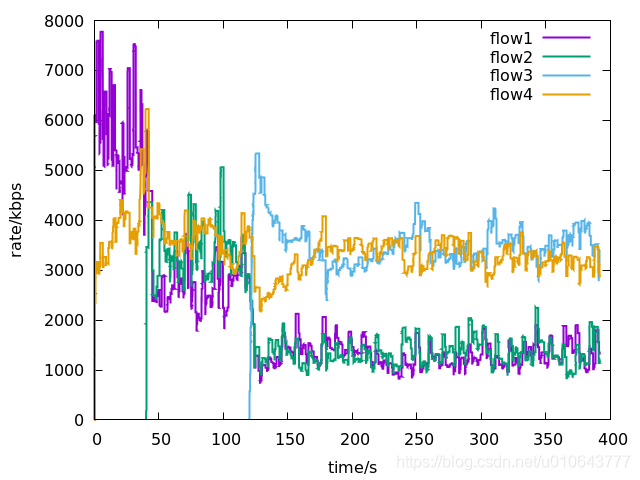
Packets received rate: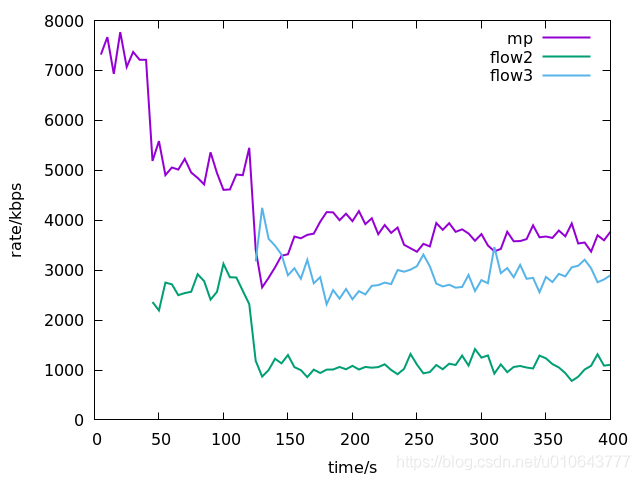
BBR has a known issue that it flavors towards flows with longer rtt. That’s the reason that flow3 can achieve higher rate than flow2.
When flow1 and flow4 perform congestion control seperately.
The sending rate of each flow: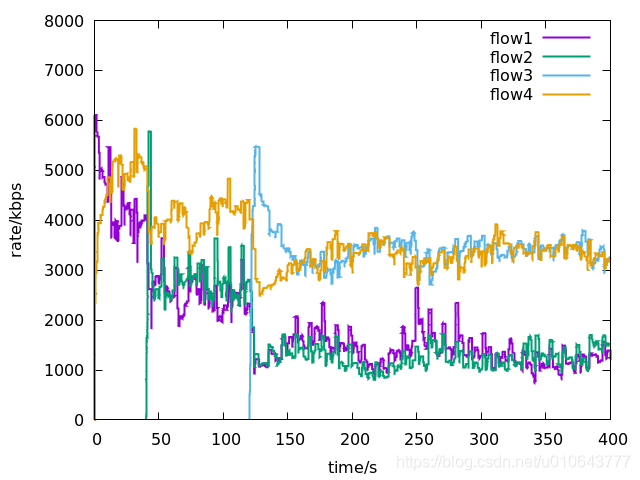
Packets received rate: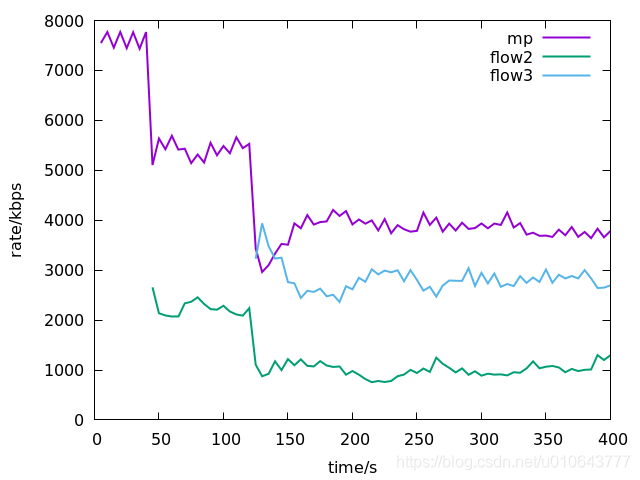
[1] Measurement and Redesign of BBR-based MPTCP
[2] Leveraging Coupled BBR and Adaptive Packet Scheduling to Boost MPTCP
[3] Coupled Congestion Control for Multipath Transport Protocols
[4] mptcp耦合式拥塞控制
[5] C-MPBBR
边栏推荐
猜你喜欢
随机推荐
7.Redis
Litestar 4D – WebCatalog 7:全自动数据管理
队列与栈
富文本编辑
Ubuntu通过apt安装Mysql
Redis 学习part one
第二十六章:二维数组
模板系列-二分
Doubled and sparse tables
shader入门精要3
LITESTAR 4D应用:室内植物照明模拟
Test case exercises
Introduction to MATLAB drawing functions ezplot explanation
关于混淆的问题
golang-reflect-method-callback
STM32LL library - USART interrupt to receive variable length information
Qt | 实现一个简单的可以转动的仪表盘
Yolov5 official code reading - prior to transmission
模板系列-并查集
C#高级教程
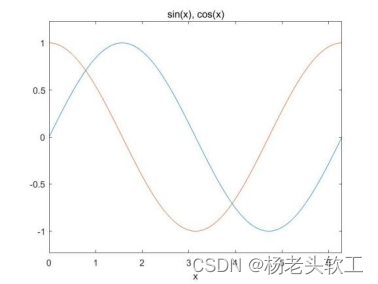
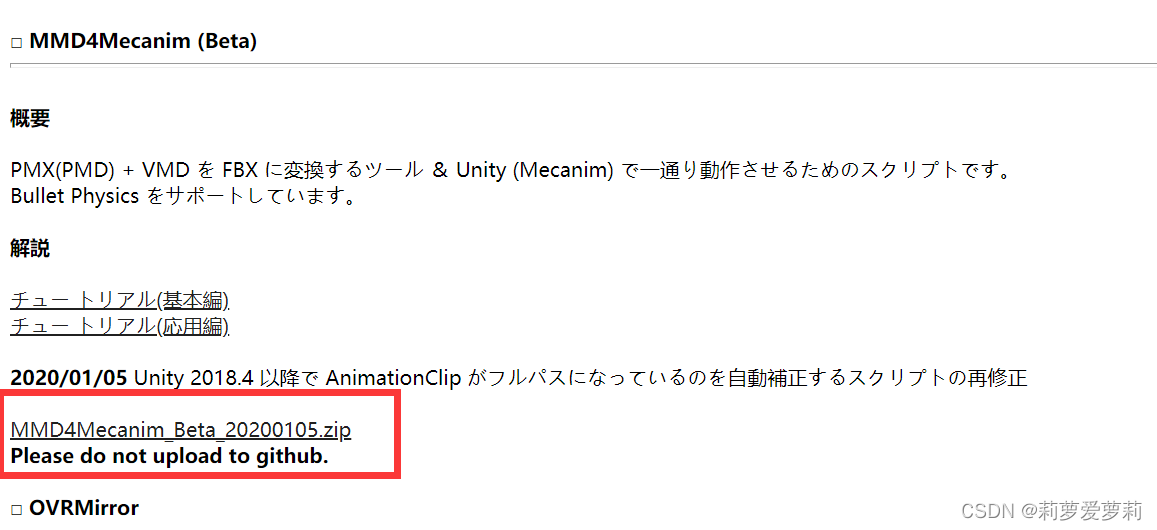
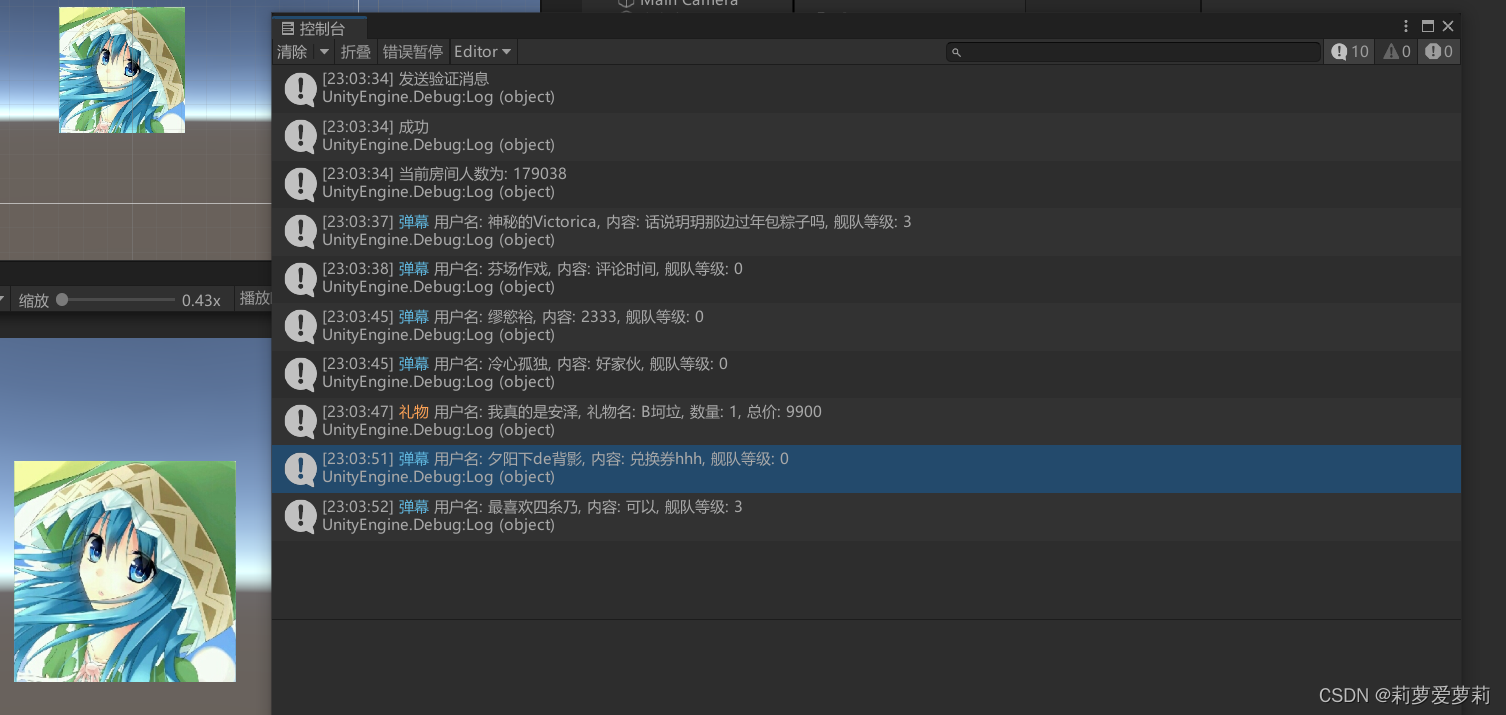
![[System Design and Implementation] Flink-based distracted driving prediction and data analysis system](/img/f0/23ac631b6eb9b794224d8ae78e6523.png)
